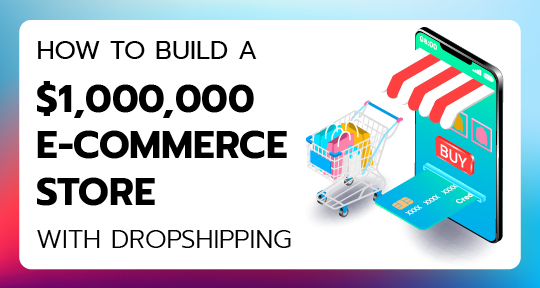Becoming an entrepreneur is a fantastic journey. Entrepreneurship begins with the desire to be your own boss, the courage to take action, and then the ability to learn from experiences and make adjustments along the way. Success is not a frequently occurring event. It takes years of practice and multiple attempts to improve your craft to reach the level of success you desire. Therefore, dropshipping is a great business, it is the perfect way to learn about branding, marketing, and customer service on your eCommerce journey. Start your journey with a dropshipping product and end with a fully branded, custom-made product.
Here is how to start your dropshipping business:
- Find a product.
- Select your niche and target audience.
- Develop your brand identity.
- Negotiate with your supplier for branded products and costs.
- Order samples and create all your product photography.
- Build a Shopify store (or Click Funnels).
- Create your social media profiles.
- Pay for influencer marketing or start creating ad campaigns.
- Launch your brand.
These are the simplified steps in creating your business. There are a lot of details to finesse and learn about. We’re going to cover product photography, videography, copywriting, supply chain management, finance, and inventory management.
When it comes to eCommerce, patience truly is a virtue. If you’re not mentally prepared to deal with the slow growth of dropshipping, then you might as well stop reading now. However, if you’re ready to start growing your eCommerce business at a steady pace without taking too much risk, then you should continue reading. As a prudent investor, you don’t invest in business ventures without knowing the basics. With dropshipping, you’ll only need $500 to $1000 to get started.
This tutorial will get into the details with regards to how you can efficiently set up your dropshipping store and talk about some of the tools that can make your life a lot easier while running that business. So, let’s go ahead and jump into the first thing that you need to invest in.
Basic Costs
The first step is purchasing a domain name, which costs about $9 to $29 per year. You will need a Shopify store, which begins at $29 per month, and there is a free 15-day trial period. We recommend Shopify because it is the easiest to set up. Shopify offers more options as your business grows, specifically plugins. Remember, you want to get your eCommerce business up and running as quickly as possible so that you can create products and run ads swiftly.
Another upfront cost is inventory. Because you’re starting small and dropshipping, you primarily need samples to photograph your product. Your inventory costs won’t be high, but ordering samples is necessary. This is because your supplier will handle the manufacturing, storing, and shipping of your product making things cheaper for you. (Though as you grow and begin to order inventory for retail opportunities your profit margins will be larger. As you will have negotiated a wholesale price for your product and have nothing stored or shipped individually to customers.)
You’ll need to invest in a website and graphic design if you market your product yourself. This can include packaging design and any necessary photography or videography. You can take professional-quality photos of your product with an iPhone, but you’ll still need video footage for customers to see your product in use and how it will benefit them.
Copywriting
Let’s examine the skills required to be a successful digital marketer. The primary discipline is copywriting; if you possess a natural flair for writing, then you may not need to learn this skill. But for most young people starting out, it makes sense to spend time developing this talent. Trial and error will point you in the right direction. The keys to a strong digital marketing campaign are perseverance and skill. If you put in the work now, you’ll reap long-term benefits down the road.
Digital marketing is an essential part of any business plan these days. With so many companies relying on the internet for both online and physical sales, it is important to have a strong online presence. Professionally written copy has the power to influence visitor behavior on your website. The difference between writing that sells and writing that doesn’t is subtle but can make all the difference in your success. Your idea might be killer, but if your copywriting is weak, you won’t sell anything. You’re writing words to create a call to action in your consumer. People buy based on their emotions; you also need to educate people about your product, so they understand that it is the right product for them.
You can join Facebook or Slack groups that are dedicated to eCommerce, where people share their ideas about case studies that worked for them. You can also go to your competitor’s ad library and study what they’re writing. If you’re feeling lazy, you can use a copy service that uses artificial intelligence, such as Jarvis or Copy.ai.
Videography and Photography
The other skill you need to learn is video production. Video production looks complex but it’s not as complicated as you may think. People often envision a professional videographer as someone who possesses complex skills and expensive equipment. Anyone can learn the basics in a relatively short period of time. As a content creator, one of the most important things you’ll invest in is your camera. This makes sense because it’s an investment but unfortunately, it can be very pricey. Specifically, it can eat up your budget for a single Facebook ad when you need more than just one. Instead, we suggest learning about videography so you can shoot high-quality videos on your iPhone.
If you’re using an iPhone, the first step to becoming a professional videographer is to study other ads that are out there. Understanding how long each clip goes for, how quick is the transition, what copy overlays they use, and making sure that you have the right lighting. This will make you into a videographer quickly.
You must know that all good stores have amazing photos. If you look at Target their photos are amazing. If you look at their competitors, the photos aren’t as good. We’re not saying you should have the best camera on the market but you should have a camera and a tripod to take your photos. A lot of people use the iPhone — it’s easy to use and it’s accessible. For some product types, like candies or chips, this is enough. Now, there are many techniques that can help you take quality photos of your products. You can find lightboxes to get the perfect lighting for your eCommerce store. You can edit your pictures with photo-editing software and make them look like works of art.
Graphic Design and Website Development
So, after you’ve done all those skills the next step is website development. This will require basic graphic design. It’s just a matter of applying what you know toward putting it to use. You’ll soon be creating your own logos and labels in no time.
Shopify is one of the easiest and most powerful platforms available to create a killer eCommerce solution that will help you sell your products to people all over the world. It’s the ideal place for beginners and experts to build your store with amazing speed, power, and ease. Adding photos, creating an awesome design, tracking your earnings, and creating a solid sales funnel takes just a few minutes – thanks to Shopify’s easy-to-use edit mode.
Advertising
The main cost you need to understand is how to control your ad spend before you launch. Primarily, you need to learn how to control the advertising budget. You can control your daily ad spend to a large degree by setting it at $10 per day until you understand if your product is profitable with all these things combined (the cost of the advertising, product development, and shipping). If you have done your research right about your niche and target audiences’ pain points, it is easier to advertise showcasing how you will solve their problem.
Social media is the best form of advertising now because you’re working alongside these platforms. There are many ways to gain organic traffic and reach. Create content and be consistent with it.
Facebook advertising is the most powerful platform for reach, data, and ease of use, but can be complex to get started. If you’re already struggling with Facebook ads, or prefer the creativity of influencer marketing and affiliate partnerships, we recommend steering clear of Facebook ads until you’re comfortable with them. Traffic is still vital to brands and Facebook ads are the best way to get impressions, but keep your goals and time frame in mind when deciding how to scale your business into something truly massive.
In a world where businesses and consumers are growing more sophisticated, understanding operations is critical. Otherwise, you’ll run the risk of letting your customers down. You’ll get negative reviews, your feedback scores will drop, and you’ll pay higher advertising costs as well as destroy your brand value. Stay true to your product and your customer.
Supply Chain
The key to optimizing a supply chain is to communicate effectively with suppliers and employees while always working in the best interest of customers. It starts by being very clear about product specifications, lead times, shipping lines, and quality. You then measure delivery time, customer reviews on your platforms, and complaints from vendors as an indicator that there is a need to change something in your process. Being prepared and getting everything in writing is essential for you and your customer. It makes the process a lot smoother.
We find it important to order samples of your products. Sometimes one supplier isn’t as consistent as another, order samples and physically seeing your product will help you determine who is the best fit for your business.
Finance
The main thing is determining your cost of delivery and holding your providers accountable for those costs, doing monthly check-ins with your finance team to make sure you’re not getting overcharged weekly. Good knowledge of finance is key in this journey. There are multiple things you need to know. First, you need to know if your brand is profitable, but the other thing you need to know is cash flow.
For a small business, two documents your accountant should create are a balance sheet and a profit and loss statement, then you can closely monitor cash flow. Your accountant should be able to create a cash flow statement, but in the early stages, you should be able to understand it based on your orders and the cash coming in. In accounting, entrepreneurs usually don’t set up their accounting software quickly enough; there are plenty available. Once you find out your product is profitable, subscribe to these very quickly.
A healthy business needs a rock-solid foundation. The time to build that foundation is not when your business is already up and running. It’s best to lay the foundation before your business takes off so you can focus on making it fly.
The truth is, it only needs to work once, and you will be changed forever. Make sure you keep learning through that failure. Don’t get discouraged and eventually you will make it if you’re willing to try hard enough.


